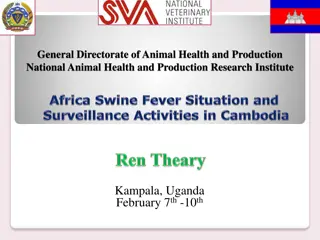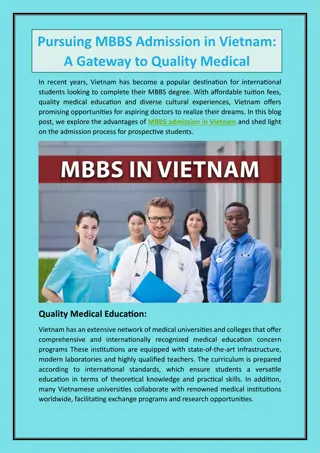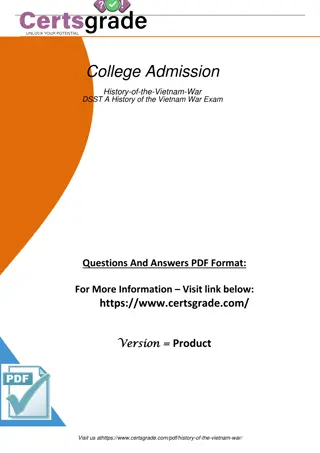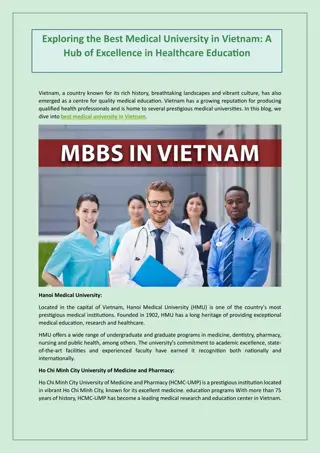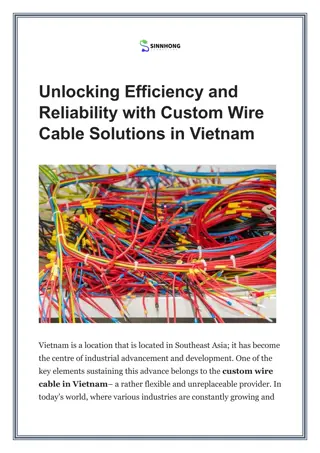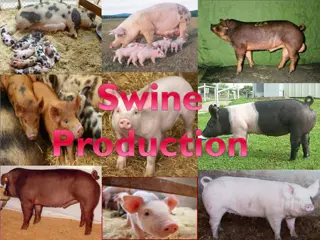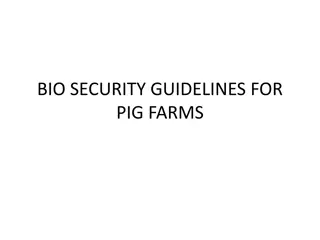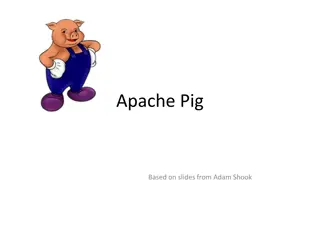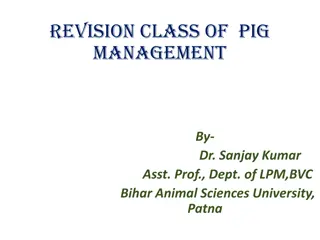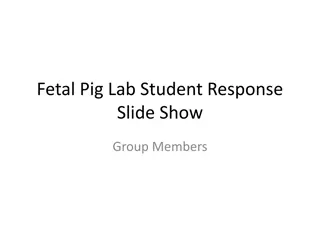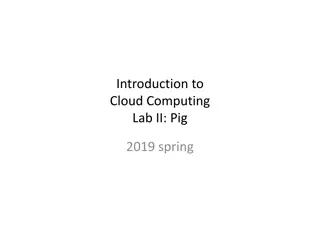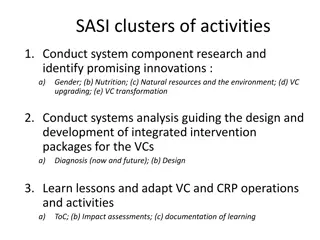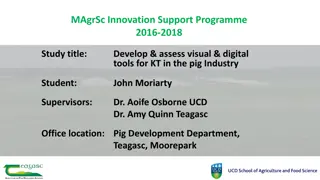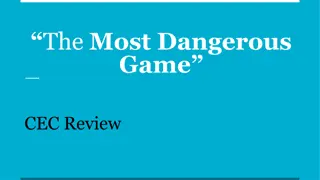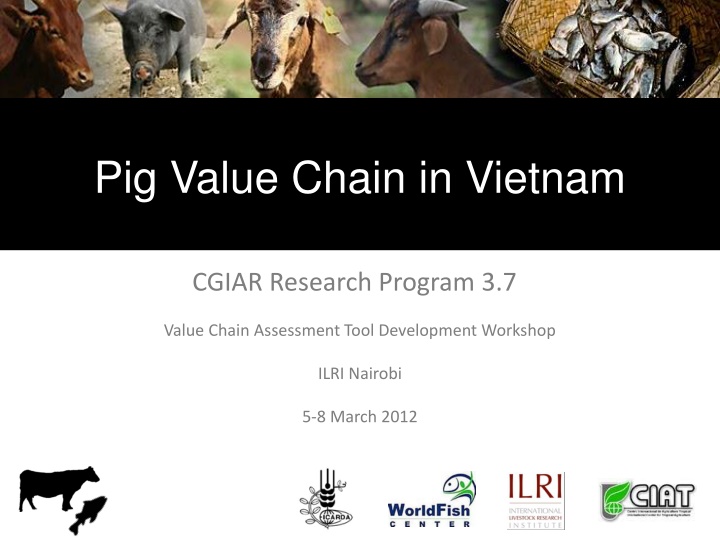
Development of Pig Value Chain in Vietnam and Proposed Outcomes
Learn about the development of the pig value chain in Vietnam, focusing on the significance of pork in the Vietnamese diet, smallholder competitiveness, and the challenges faced in pig production. Explore the proposed priority outcomes and outputs for 2012-2014, emphasizing the establishment of research alliances and tools for assessing value chains to promote pro-poor development.
Download Presentation

Please find below an Image/Link to download the presentation.
The content on the website is provided AS IS for your information and personal use only. It may not be sold, licensed, or shared on other websites without obtaining consent from the author. If you encounter any issues during the download, it is possible that the publisher has removed the file from their server.
You are allowed to download the files provided on this website for personal or commercial use, subject to the condition that they are used lawfully. All files are the property of their respective owners.
The content on the website is provided AS IS for your information and personal use only. It may not be sold, licensed, or shared on other websites without obtaining consent from the author.
E N D
Presentation Transcript
Pig Value Chain in Vietnam CGIAR Research Program 3.7 Value Chain Assessment Tool Development Workshop ILRI Nairobi 5-8 March 2012
Why pigs in Vietnam? Pork is a significant component of the Vietnamese diet, per capita pork consumption is likely to remain on the uptrend with rising incomes. Strong demand for fresh pork that smallholders can supply through most preferred outlets by consumers; Changing nature of pork demand, e.g., emerging food safety, quality concerns need to be assessed and properly understood Dominance of smallholders in pig production, importance in employment generation, significant contribution to HH income Smallholder competitiveness (vis- -vis other suppliers, e.g., large farms, imports) remains a development policy challenge (rising feed prices, animal disease risks) Enabling policy environment, willingness of policymakers, development partners, and stakeholders to engage in R4D initiatives Building on previous ILRI work with various partners.
Projected share of pork supply from large- scale producers Share of large-scale modern sector in pig production 14% Base simulation 12% High income growth 10% High tech growth in modern sector 8% No tech growth in traditional 6% No tech growth in maize High income elasticity of modern 4% High income elast and tech growth in modern 2% Worst case for traditional sector 0% 0 1 2 3 4 5 6 7 8 9 10 Year
Proposed Priority Outcomes & Outputs 2012 2013 2014 CRP3.7, local and international partners have established an R&D alliance to transform target VC in each country 1. Partners have capacity to use basic set of tools for VC assessment 2. Stakeholders in each country are increasingly aware of potential, constraints and initial options for pro-poor development of target VC Evidence base in each target VC for best-bet pro-poor VC development interventions is influencing development investment decisions Outcomes
Proposed Priority Outcomes & Outputs 2012 2013 2014 R&D alliance 1. capacity to use tools 2. Stakeholders aware 1. Inventory and evidence base (literature review) for key constraints and proposed solutions compiled Evidence base influencing decisions 1. Best-bet intervention strategy formulated and tested, ready for scaling up and out. Outcomes 1. Scoping study to develop an inventory of feed technology options and identify stakeholders and potential partners. Research Outputs 2. Rapid assessment of target VC to inform design of in-depth assessment of animal health constraints, and to identify preliminary priority constraints and best-bet upgrading strategies to test. 2. Quantitative assessment of VC performance 3. Technical and economic assessments of key VC components to target for upgrading (e.g. farm-level: husbandry, feeds, breeds, health, environmental issues; market-level: institutional environment, food safety, demand characteristics; overall: policies, organizational strategies) 3. Selected best-best options on feeds, animal health (biosecurity, diagnostics) and possibly breed, identified and piloting initiated in selected sites (e.g. with LIFSAP)
Proposed Priority Outcomes & Outputs 2012 2013 2014 R&D alliance 1. capacity to use tools 2. Stakeholders aware Evidence base influencing decisions Outcomes Research Outputs 4. Basic toolkit for VC assessment compiled for testing (with CRP 2) 4. Pig feed ration decision support tool to inform feeding options under a range of feed types, nutrient value, and feed prices (build on CIP- LifSim model?) 5. Analytical framework for assessing VC performance established (with CRP 2)
Current Activities & Resources/Potential Linkages ACIAR Improving competitiveness of pig producers in an adjusting Vietnam market (recently completed, ongoing engagement with national partners on policy advocacy, outreach); completed New project: Supporting small-scale pig production in Vietnam through reducing risks, enhancing productivity, and upgrading value chains (with CRP 4.3, likely 2012); GEF-Asia (Vietnam) Development and application of decision support tools to conserve and sustainably use genetic diversity in indigenous livestock and wild relatives (pigs) CIAT Improved forage-based feeding systems in Vietnam (+Cambodia, Laos) WB-MARD Livestock Competitiveness and Food Safety Project (development partner)
Identified Priority Gaps for Resource Mobilization VC assessment of productivity constraints from animal diseases, prioritization. ACIAR risk assessment and food safety (2nd half 2012) Inventory of feeding options and assessment to identify best-bet options for testing and validation, both in terms of technical parameters and economic viability. CIAT-IFAD forage-based feeding systems, started in 2012; likely integration in Vietnam team s work plan (being discussed) Assessment of innovation capacity at farm level (farmers, development partners on technology adoption) and along the value chain (best practices, institutions). Assessment of VC performance (ex ante and ex post) of identified interventions.
2012 Priorities for Organisational, Capacity Development and Communication Activities Restructure team to match CRP needs at the target VC (economist time + some vet- epi time from CRP 4.3 + some feeds specialist time?). Identify gaps for priority recruitment and/or shared appointments (local research support, pig nutrition) and partnership. Communications specialist (AYAD volunteer) in place to support communication activities Research officer position being sought from funding through AVID Identify strategy and mechanisms for working links internally with other CRP3.7 components, and externally with CRP2 and CRP 4.3.
Project survey sites across 6 agro- ecological regions of Vietnam Hanoi, Ha tay Phu Tho Nghe An Dak Lak HCMC, Dong Nai, Tien Giang

